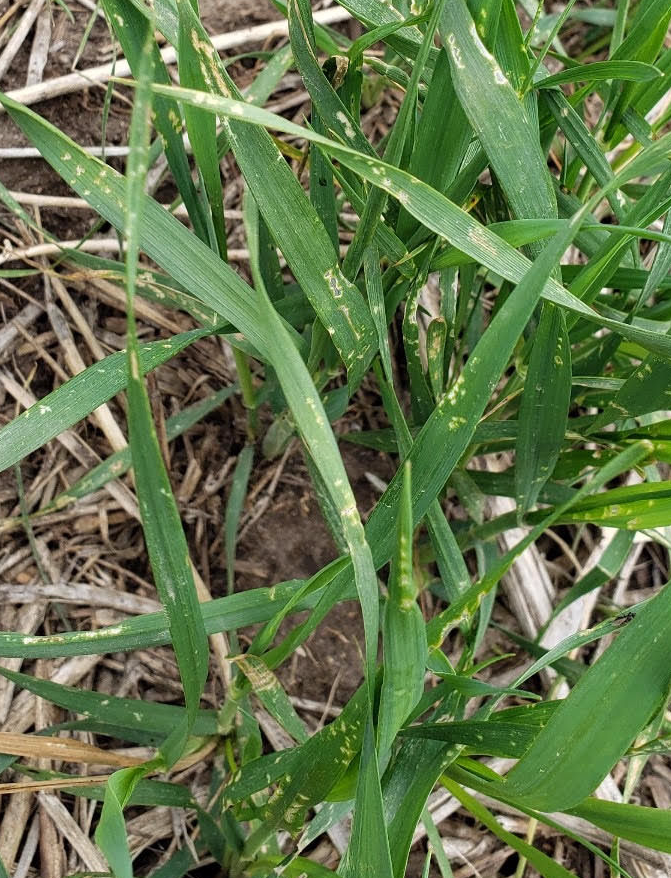
Green Grass Bug Damage
A grower submitted the following photo of mysterious damage on his wheat crop… After
consulting John Gavloski, an entomologist with Manitoba Agriculture, we concluded it was
potential feeding from green grass bug. They overwinter as eggs, with adults emerging in the
spring to lay eggs in cereals and other grasses. Both adults and nymphs (immature form) feed
on the leaf and stem tissue. Fortunately for us, they are not considered a serious pest and
cereal crops tend to outgrow this damage!
Fungicide in Field Peas
The time for fungicide application in peas is quickly approaching! Common diseases with an economic impact include mycosphaerella blight, powdery mildew, and white mold. A timely fungicide application, start of flowering or first sign of disease, can help protect your yield potential.
Pea Aphids
Another pest to be on the lookout for is pea aphids. They overwinter as eggs on perennial legumes, hatching into females which produce further generations asexually. After 2 to 3 generations the females become winged, migrate to annual hosts, and produce more generations.